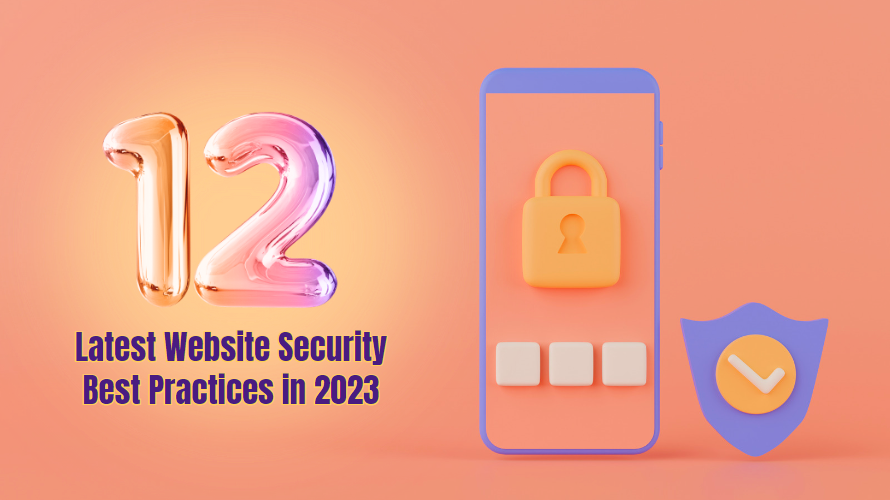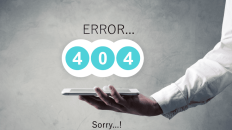In today’s digital landscape, websites are a crucial part of any business or individual’s online presence. However, with the increasing threat of cyber-attacks and data breaches, website security best practices have become more important than ever.
Leaving your website vulnerable can have severe consequences, such as compromising sensitive information, damaging your reputation, and losing business. Therefore, it’s essential to stay up-to-date with the latest website security best practices to protect your website and safeguard your online assets.
In this blog post, we will explore the latest website security best practices in 2023 to help you secure your website and keep it safe from potential threats.
1. Keep Your Software Up to Date
One of the most fundamental website security best practices is to regularly update your website software, including your content management system (CMS), plugins, themes, and any other software you may be using. These updates often include important security patches and fixes that address known vulnerabilities. Keeping your software up to date ensures that you are protected against known security vulnerabilities that hackers may exploit.
2. Use Strong and Unique Passwords
Weak passwords are one of the leading causes of website security breaches. Avoid using common or easily guessable passwords, such as “password123” or “admin.” Instead, use strong and unique passwords that include a combination of uppercase and lowercase letters, numbers, and special characters. Additionally, avoid using the same password for multiple accounts. Consider using a password manager to generate and store complex passwords securely.
3. Implement Two-Factor Authentication (2FA)
Two-Factor Authentication (2FA) adds an extra layer of security to your website by requiring users to provide two different forms of identification before gaining access. This typically involves providing a password and a unique code that is sent to a user’s mobile device or email. Implementing 2FA can significantly reduce the risk of unauthorized access to your website.
4. Regularly Backup Your Website
Backing up your website regularly is crucial to ensure that you can quickly recover your website in case of a security breach or data loss. Choose a reliable backup solution and schedule regular backups of your website’s files and databases. Store backups in a secure location, preferably offsite, to protect against data loss due to server failures or other physical incidents.
5. Use HTTPS and SSL/TLS Certificates
HTTPS (Hypertext Transfer Protocol Secure) encrypts the data transmitted between a website and its visitors, preventing eavesdropping and tampering. SSL/TLS certificates are used to establish a secure connection between the website server and the user’s browser. Implementing HTTPS and using SSL/TLS certificates can protect sensitive data, such as login credentials and payment information, from being intercepted by malicious actors.
6. Regularly Monitor Your Website
Regularly monitoring your website for any signs of vulnerabilities or suspicious activity is crucial to detecting and mitigating potential security risks. Use security monitoring tools to scan your website for malware, vulnerabilities, and other security issues. Set up alerts and notifications to be alerted immediately of any security breaches or unusual activity on your website.
7. Limit Access and Permissions
Limit the number of users who have access to your website’s backend and control panel. Only provide access to those who need it and revoke access for users who no longer require it. Additionally, limit the permissions of each user account to the minimum necessary to perform their tasks. Avoid using the default “admin” username and create unique usernames for each user to make it harder for hackers to gain unauthorized access.
8. Regularly Audit and Remove Unused Plugins and Themes
Unused plugins and themes can pose a security risk if they are not kept up to date with the latest security patches. Regularly audit your website for unused plugins and themes and remove them to minimize the potential attack surface. Additionally, only download plugins and themes from trusted sources and keep them updated to ensure that you are using the latest versions with patched security vulnerabilities.
9. Use Web Application Firewall (WAF)
Implementing a web application firewall (WAF) can provide an additional layer of security to your website. A WAF filters and monitors HTTP/HTTPS requests to your website and helps protect against common web-based attacks, such as cross-site scripting (XSS), SQL injection, and other malicious activities. Consider using a reputable WAF service or plugin to enhance your website’s security.
10. Educate Your Users
Your website’s security is not just your responsibility, but also that of your users. Educate your users, such as employees or customers, about the importance of strong passwords, safe browsing practices, and being cautious with sharing personal information online. Provide clear instructions on how to use your website securely and encourage them to report any suspicious activity they encounter.
11. Regularly Conduct Security Audits
Conducting regular security audits of your website can help identify potential vulnerabilities and weaknesses in your website’s security posture. Consider hiring a professional security firm to conduct a thorough security audit, including penetration testing, vulnerability scanning, and code review, to identify and fix any potential security gaps.
12. Have a Plan for Security Incidents
Despite all precautions, security incidents can still occur. It’s essential to have a plan in place to respond promptly and effectively to any security breaches. Create an incident response plan that outlines the steps to take in case of a security incident, including who to contact, how to isolate and contain the breach, and how to restore your website to a secure state.
Conclusion
In conclusion, website security should be a top priority for any website owner or administrator.
Implementing the latest website security best practices in 2023, such as keeping your software up to date, using strong and unique passwords, implementing two-factor authentication, using HTTPS and SSL/TLS certificates, monitoring your website, limiting access and permissions, auditing plugins and themes, using a web application firewall, educating your users, conducting security audits, and having a plan for security incidents, can significantly reduce the risk of your website being compromised.
By taking proactive steps to secure your website, you can protect your valuable data, maintain your reputation, and provide a safe browsing experience for your users. Don’t leave your website vulnerable – invest in website security to safeguard your online assets.
For more similar blogs, visit: https://blog.hostingshouse.com/










Add comment